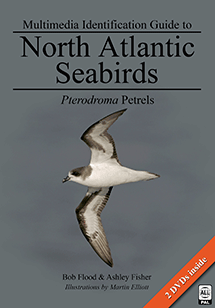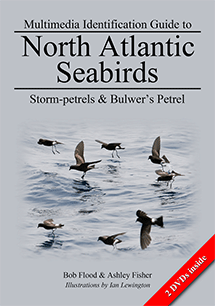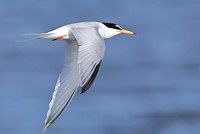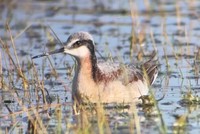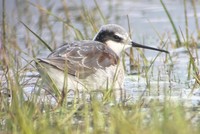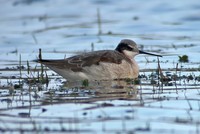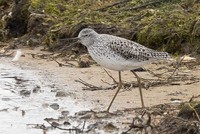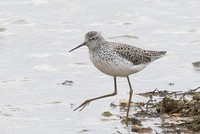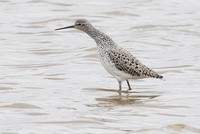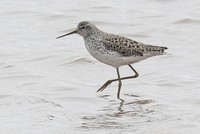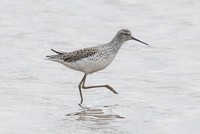Pirates, Pianos and Petrels
In search of Jouanin’s Petrels between Muscat and Djibouti 31 March to 4 April 2015
by Bob Flood, www.scillypelagics.com
I have just returned from a seabird quest that turned out to be the most bizarre of my seabirding career. The purpose was to study Jouanin’s Petrel Bulweria fallax. The cruise offered by Swan Hellenic on MV Minerva called ‘Jewels of Arabia and the Red Sea’ focussed on cultural experiences. However, the sea passage took us from Muscat, Oman on the Arabian Peninsula, to Djibouti, northeast Africa crosscutting the main breeding islands of Jouanin’s Petrel off Oman and the Socotra archipelago, Yemen. The cruise then continued up the Red Sea. This was far from an expedition cruise for seabirds but it turned out to be one hell of a seabird adventure.
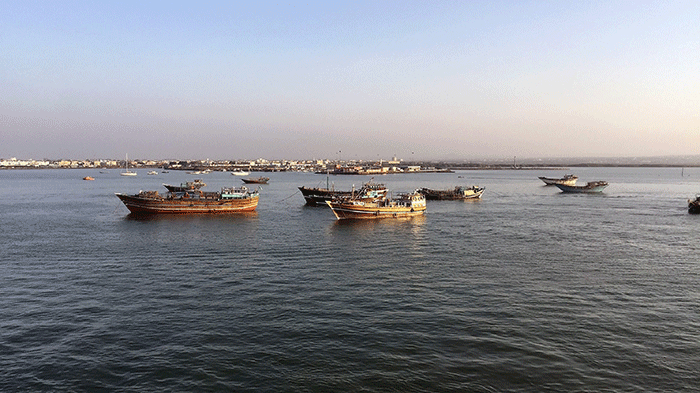
The ship, its facilities and services were 5 star. The cruise participants were largely high society including colonels, aristocrats, Professors and Doctors. Formal nights were black suit and tie. Entertainment included opera, strings and piano, and The Totties (a la Flanders and Swan). It was very posh. Yet this vessel was to sail in dangerous waters with the sinister threat of modern-day Somali pirates looming over every horizon. To meet this threat the vessel was dressed in rolls of barbed wire, with rows of water cannons, long trails of wire off the stern, lead-weight metal barrels to throw at boarding pirates, and AK47 armed guards including two members of the feared Gurkha regiment. The lifeboat drill was followed by a piracy alert drill! Further, the Yemen troubles were audible at sea off Aden with the occasional deep thud as Saudi jets bombed the famous town. Our destination Djibouti became the focus of the refugee exodus in the days before we arrived. The contrast of luxury against fire and brimstone was surreal, if not uncomfortable.
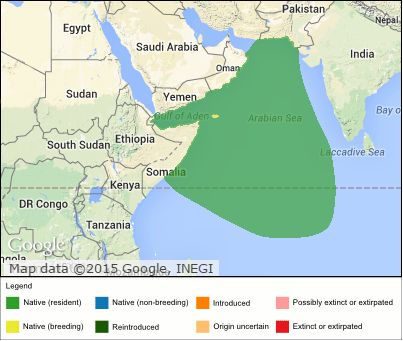
suspected moderately small range, and could be uplisted to a higher threat
category if found to be in decline or if the range is smaller than suspected.
Breeding sites are very poorly known. Interestingly, pelagic trips out of
Broome, Australia, have recorded Jouanin's on a number of occasions
suggesting that the at-sea range is extensive across the Indian Ocean.
(© BirdLife International BirdLife Datazone)
Still, I came for the petrels and I studied the petrels. The passage offered a unique opportunity for extended observation of travelling and foraging flight of Jouanin’s Petrel. Most studies use chumming techniques to draw in birds, which are then observed and photographed in manufactured conditions. This of course is a very useful technique for close-up studies of structure and plumage, but does not get to grips with routine travelling and foraging flight. The two modes of study are complementary.
The first Jouanin’s Petrels were seen from a small motorboat out of Muscat, North Oman on 30 March. Five birds were seen in two hours just a few kms offshore. This somewhat contradicts field guides that say Jouanin’s are rarely seen near to land. Later in the trip Jouanin’s were seen not far out of the port of Salalah, South Oman where motorboats are also available. Jouanin’s is a relatively easy to get and valuable add-on bird to a land-birding trip to Oman.
The cruise departed on the evening of 30 March. I spent the daylight hours on deck except for meals. Muscat to Djibouti involved about five sea days. I kept a detailed record of sightings of Jouanin’s along with GPS data from the ship’s log (kindly given by the captain) and this makes an interesting transect study that I will publish in due course. In summary, Jouanin’s were surprisingly scarce during the first morning as we sailed toward Salalah, but picked up in the afternoon. There was a peak in numbers on day 2 as we approached the Al-Hallaniyah islands east of Salalah where birds probably breed. Numbers were lower but steady from Salalah to Djibouti until the last day when just two birds were seen, one in the morning and another late afternoon as we approached Djibouti. All told I saw 215+ birds on the sailing Muscat to Djibouti.
The sightings provided a great opportunity to study the traveling and foraging flight of Jouanin’s. In particular, I was interested to compare the flight behaviour with my previous experience of the only other member of the Bulweria genus, the smaller Bulwer’s Petrel B. bulwerii. Flight behaviour is very important in the separation of similar-looking storm-petrels and Bulweria petrels, a point stressed in our multimedia ID guide Storm-petrels and Bulwer’s Petrel. Despite good sales of the guide, I regularly receive requests for assistance with ID of these seabirds and am disappointed that so few of them are accompanied by a description of flight behaviour.
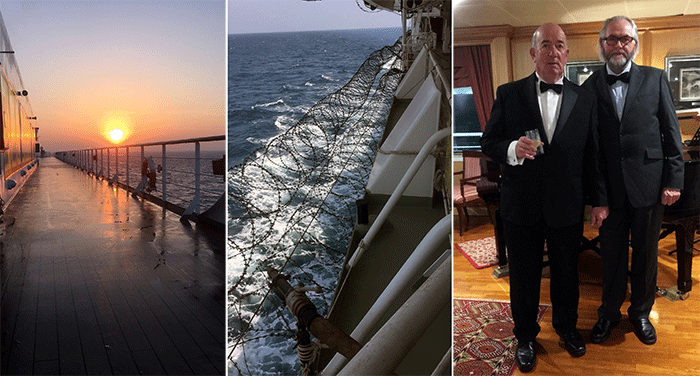
Jouanin’s Petrels showed no interest in the ship and only altered flight behaviour when hastening to cross the bow. The flight behaviour appeared unlike any other petrel I have seen (most of them) and quite different from Bulwer’s Petrel. Instructive video clips of both species are given below. Studying the clips is akin to gaining field experience and once you get your eye in the considerable differences between the flight behaviour of the two species of Bulweria petrel become obvious. With video experience and reasonable views it should be possible to identify the two species in the field with binocular views before looking at your photos, which ironically could confuse matters as shots of either species often suggest the other species.
In both cases low wing loading and very long flexible wings give an effortless buoyant flight. Both species flap wings and glide in calm conditions, and glide for longer and shear in moderate to strong winds. Some field guides say Jouanin’s flap wings almost continuously in light winds contrary to my experience. The main differences in flight action are the floppy wingbeats of Jouanin’s. Bulwer’s flight action is springy with faster wingbeats. It makes quicker manoeuvres, tighter turns, and will suddenly flip/change direction. Bulwer’s can be quite zippy while Jouanin’s is most definitely the B52-Bulweria.
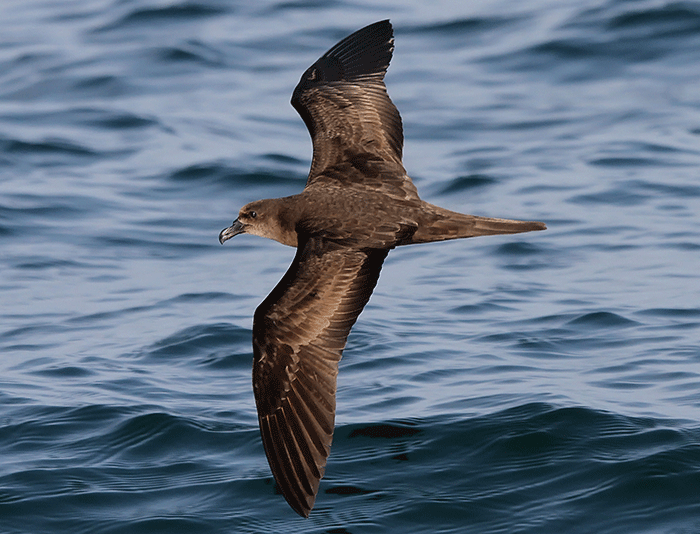
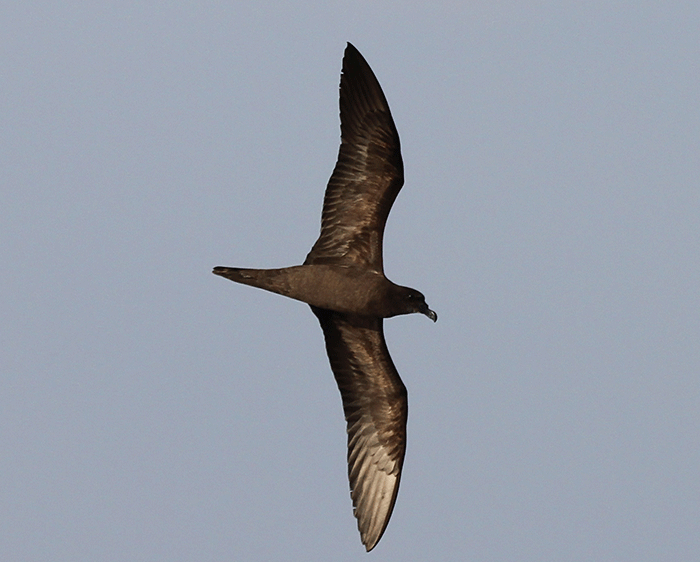
Bulwer’s on a chum slick collects food by foot-pattering, surface-seizing like a large storm-petrel. It. faces into the breeze and hovers over the spot with heavy-buzzard-like wing flaps. I saw Jouanin’s collect food on several occasions and they used the same basic technique; however, Jouanin’s wing flaps are even heavier. Also, the manner of investigation of potential prey typically is more excited and energetic with Bulwer’s.
Also of interest, on several occasions we flushed rafting birds from the sea. Sat on the sea Bulwer’s Petrels look like floating black bananas, while Jouanin’s look like giant floating black bananas. Rafts of both species take to the wing en masse when flushed; the smaller Bulwer’s burst into flight and scatter in all directions, while Jouanin’s lift off the sea and steadily disperse.
Dipped bill is a well-known characteristic of Jouanin’s, while Bulwer’s tends to hold its bill more horizontal. So, Jouanin’s appears to look down while Bulwer’s appears to look forward. I found this is a useful feature within the range that the bill is visible, which depends on light and sea conditions.
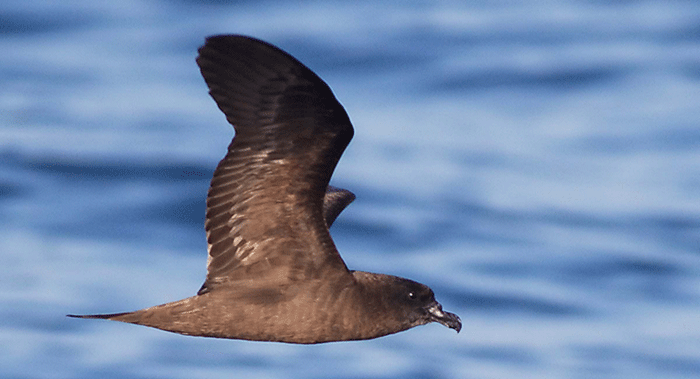
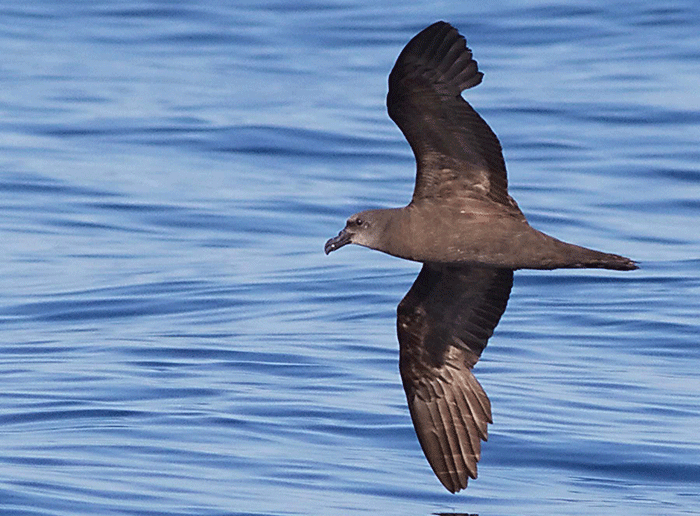
In general, field guides state that only a trace of the indistinct upperwing ulnar bars of Jouanin’s is visible and mainly when the feathers are old and worn. My experience was somewhat different. The Jouanin’s I saw were in relatively fresh plumage, presumably having undergone a complete moult following the breeding season May to September. I observed them in various light conditions and often saw the ulnar bars, even at mid-range, although admittedly they were dull compared to the sometimes striking ulnar bars on Bulwer’s. The ulnar bars were more obvious than shown in the video clips.
The more robust bill, relatively larger head, broader wings and less attenuated tail of Jouanin’s compared to Bulwer’s were most obvious at close range. The larger size of Jouanin’s was evident in its heavier flight.
Separation of the two Bulweria from other all-dark petrels is the subject of a future presentation.
Jouanin’s Petrel
Jouanin’s Petrel - foraging in moderate breeze (© Bob Flood - www.scillypelagics.com )
Jouanin’s Petrel - crossing the bow in moderate breeze (© Bob Flood - www.scillypelagics.com )
Jouanin’s Petrel - crossing the bow in light breeze (© Bob Flood - www.scillypelagics.com )
Jouanin’s Petrel - steady foraging in calm conditions (© Bob Flood - www.scillypelagics.com )
Jouanin’s Petrel - group dispersing after flushing a raft (© Bob Flood - www.scillypelagics.com )
Bulwer's Petrel
Bulwer's Petrel - travelling (© Bob Flood - www.scillypelagics.com )
Bulwer's Petrel - foraging in moderate breeze (© Bob Flood - www.scillypelagics.com )
Bulwer's Petrel - around chum (© Bob Flood - www.scillypelagics.com )
Bob Flood
www.scillypelagics.com
22 April 2015
Acknowledgements
Thanks to Captain Broomhall for access to the ship’s log book, James Parry for general assistance on the cruise, and Swan Hellenic for a first-class cruise. Alan Hannington from Scilly and Steve and Margaret Bosworth participated in deck watches. Alan’s partner Melanie and my wife Mandy provided great company. Dave Andrews kindly provided the photographs of Jouanin's Petrel, and Mike Watson from Birdquest put me in touch with Dave, and to Peter Harrison for his photos from Oman and Yemen.
Write for Rare Bird Alert
Do you have a birding story you would like to share? From foreign birding trips to your local patch we would love to hear from you.
All our articles are free for anyone to view and we include them in our weekly newsletter which goes out to thousands of birders every Wednesday. We also share them on our Twitter and Facebook pages, making sure your article will get read by as many people as possible.
If you would like to write an article please for us please get in touch with your ideas, thank you.
The RBA team


